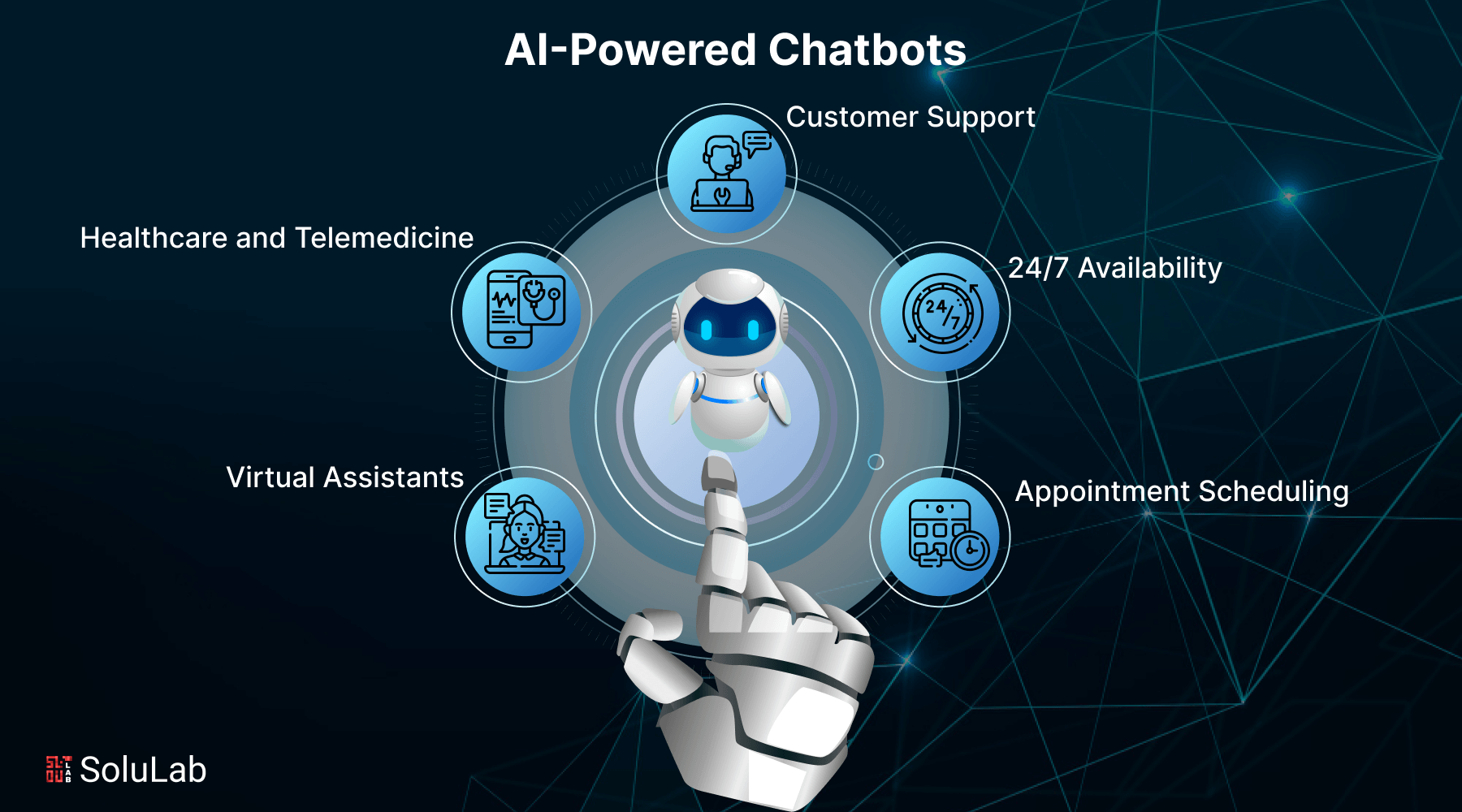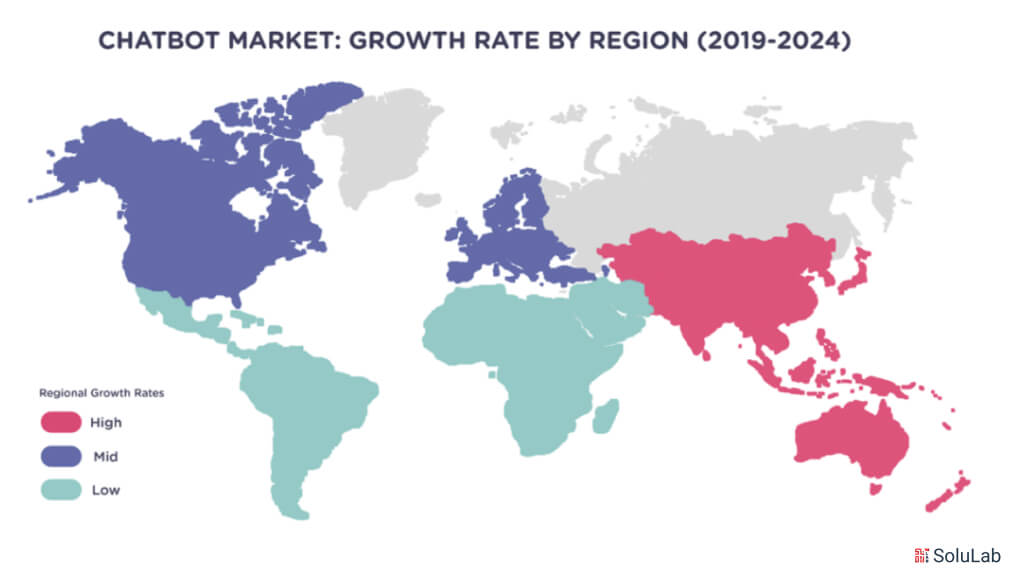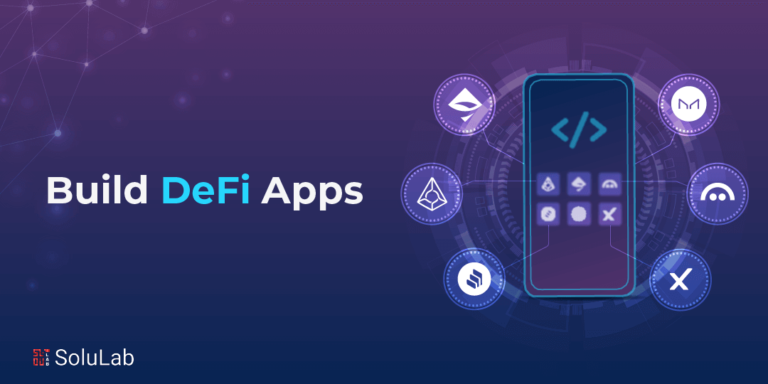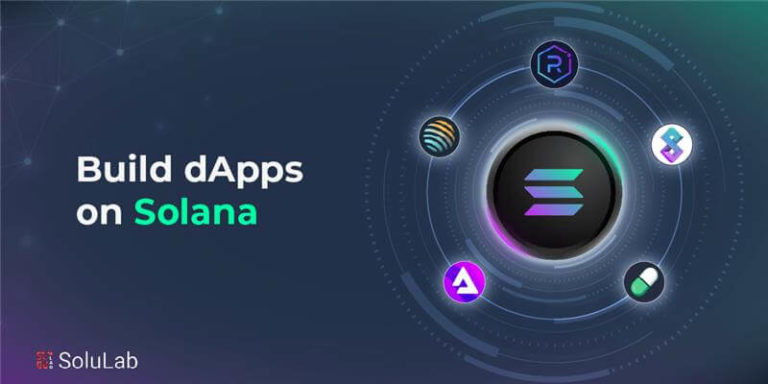
Even prior to the pandemic, the chatbot industry had been experiencing consistent growth. However, as the statistics indicate, the crisis significantly accelerated the industry’s adoption. In 2020, the chatbot market was valued at $17.17 billion, and it is projected to reach a staggering $102.29 billion by 2026, representing a compound annual growth rate (CAGR) of 34.75% during the forecast period from 2021 to 2026. The pandemic has highlighted the importance of data-driven decision-making, with 74% of decision-makers reporting increased reliance on data compared to pre-COVID times. However, only 30% of them excel at making data-driven decisions. The pandemic’s efficiency in exposing gaps in business workflows has caused 78% of decision-makers to invest in new technologies as a direct response to COVID-19.

How AI Powers Chatbots?
Understanding natural language processing (NLP) and machine learning (ML), two key AI building blocks is crucial to comprehending how chatbots work.
The term “natural language processing” (NLP) describes a computer system’s capacity to comprehend and decipher human discourse. It entails dissecting linguistic components, including words and phrases, to derive meaning. Chatbots can grasp user inquiries thanks to NLP and answer in a way that seems natural and kind.
A subset of artificial intelligence (AI) called machine learning (ML) aims to make it possible for computers to learn from experience and advance without explicit programming. Chatbots can study and comprehend patterns in enormous volumes of data thanks to ML algorithms, which help them improve over time.
What is the Role of NLP in Enabling Chatbots to Understand and Respond to User Queries?
NLP plays a crucial role in enabling chatbots to understand and respond effectively to user queries. Through NLP techniques, chatbots can break down user input, identify the intent behind the message, and extract relevant information.
Chatbots equipped with NLP algorithms employ techniques such as entity recognition, part-of-speech tagging, and syntactic parsing. These techniques allow chatbots to identify important keywords, understand the grammatical structure of sentences, and extract relevant entities or entities. As a result, chatbots can comprehend user queries in a more accurate and nuanced manner.
NLP also enables chatbots to handle variations in user language, including slang, misspellings, and abbreviations. By employing techniques like stemming and lemmatization, chatbots can normalize and understand different forms of words, ensuring a higher level of accuracy in their responses.
What is the Role of ML in Improving Chatbot Performance Through Data Analysis and Pattern Recognition?
Machine Learning(ML) plays a significant role in improving chatbot performance by analyzing data and recognizing patterns. ML algorithms enable chatbots to learn from past interactions and apply that knowledge to future conversations.
Through ML, chatbots can analyze vast amounts of data, including historical chat logs and user interactions, to identify patterns and extract meaningful insights. This analysis helps chatbots understand user preferences, predict user intent, and deliver more personalized responses.
ML algorithms also enable chatbots to continuously improve their performance. By leveraging techniques like supervised learning, unsupervised learning, and reinforcement learning, chatbots can refine their responses based on feedback and optimize their conversational AI abilities. This iterative learning process helps chatbots become more accurate, efficient, and capable of providing valuable assistance to users.
What are the Features and Capabilities of AI-powered Chatbots ?
AI-powered chatbots have changed the way businesses interact with their customers by offering advanced features and capabilities that go beyond traditional rule-based chatbots. Let’s explore some of the key features and capabilities that make AI-powered chatbots stand out:
-
Ability to Gather and Utilize User Data for Personalized Interactions
AI-powered chatbots can gather and analyze user data to provide personalized interactions. By integrating with customer relationship management (CRM) systems or leveraging data from previous interactions, chatbots can access user preferences, purchase history, and other relevant information.
This allows them to tailor responses and recommendations based on individual user profiles, creating a personalized and engaging experience.
For example, a chatbot in an e-commerce store can recommend products based on a user’s browsing history and past purchases. By understanding user preferences and behavior, the chatbot can provide personalized product suggestions, increasing the likelihood of conversion.
DO YOU KNOW?
Chatbot usage statistics indicate a wonderful 67% growth between 2018 and 2020, highlighting the significant incorporation of chatbots in various industries.
-
Contextual Understanding to Maintain Conversational Flow and Continuity
Ai-powered chatbots are designed to understand and maintain context during conversations. They can comprehend the context of a user’s queries and provide relevant responses, ensuring a smooth conversational flow.
Chatbots achieve contextual understanding through techniques like session management, where they retain information from previous interactions to provide consistent and coherent responses. This allows chatbots to remember user inputs, preferences, and even specific questions asked earlier, creating a seamless user experience.
For instance, if a user asks a chatbot about flight options and later follows up with a question like “What are the prices?”, the chatbot can understand the context and provide prices related to the previous flight options discussed. This contextual understanding enhances user satisfaction and eliminates the need for users to repeat information.
AI-powered chatbots can also handle interruptions or changes in the conversation flow gracefully. They can recognize topic shifts, respond appropriately, and seamlessly transition back to the previous context if needed. This capability enhances the conversational experience and mimics human-like interactions.

What are the Benefits of AI-powered Chatbots?
AI-powered chatbots have become a game-changer for businesses, offering numerous benefits and advantages that significantly enhance customer service and support. Let’s explore some of the key benefits of incorporating AI-powered chatbots into customer interactions:
-
24/7 Availability and Instant Response Times
One of the significant advantages of AI-powered chatbots is their ability to provide round-the-clock customer support. Unlike human agents with limited working hours, chatbots are available 24/7, ensuring that customers can get assistance whenever they need it. This availability eliminates the frustration of waiting for business hours or being put on hold, leading to higher customer satisfaction.
Moreover, AI-powered chatbots can offer instant response times. They can provide immediate answers to frequently asked questions, eliminating the need for customers to wait for a human agent to become available. Quick response times contribute to a positive user experience and demonstrate a commitment to customer service.
-
Efficient Handling of Customer Inquiries and Issue Resolution
AI-powered chatbots excel in efficiently handling customer inquiries and resolving issues. They can handle a large volume of inquiries simultaneously, ensuring that customers don’t experience long wait times or delays in getting assistance.
Chatbots can provide accurate and relevant information based on their training and access to data sources. By leveraging machine learning and natural language processing, they can understand user queries, identify the intent behind them, and provide appropriate responses. This leads to faster issue resolution and reduces the need for customers to reach out to human agents for basic inquiries.
Additionally, AI-powered chatbots can guide customers through troubleshooting steps, provide step-by-step instructions, or offer solutions to common problems. By delivering self-service options, chatbots empower customers to resolve issues independently, further enhancing efficiency and reducing support costs.
What are the Applications of AI-powered Chatbots?
AI-powered chatbots have found widespread applications across various industries, changing the way businesses interact with customers and streamline their operations. Let’s explore some of the key applications of AI-powered chatbots:
1. Customer Support and Service
AI-powered chatbots are extensively used for customer support and service. They can handle a wide range of customer inquiries, provide instant responses, and assist with common issues.
Chatbots can offer 24/7 support, ensuring customers receive assistance at any time. They can also provide personalized recommendations, track order statuses, and handle returns or refunds, enhancing the overall customer experience.
2. E-commerce and Sales
Chatbots are valuable tools for e-commerce businesses. They can engage customers in personalized conversations, recommend products based on preferences and purchase history, and provide real-time product information.
Chatbots can also assist in completing transactions, offering payment options, and answering questions about shipping and delivery. By guiding customers through the sales process, chatbots contribute to increased conversions and revenue generation.
3. Information Retrieval and FAQs
Chatbots excel in providing quick and accurate information retrieval. They can answer frequently asked questions (FAQs) and guide users to relevant resources or web pages. By utilizing natural language processing, chatbots can understand user queries, extract key information, and provide precise responses. This application is particularly useful for businesses with extensive knowledge bases or information-heavy websites.
DO YOU KNOW?
In the forecast period between 2021 and 2026, the chatbot market, which was valued at billion, is anticipated to experience tremendous growth, reaching an astounding $102.29 billion. During this period, the compound annual growth rate (CAGR) is predicted to be an impressive 34.75%.
4. Appointment Scheduling and Reservations
AI-powered chatbots can handle appointment scheduling and reservation requests. They can access calendars, check availability, and book appointments or make reservations on behalf of customers. Chatbots can also send reminders and notifications to ensure customers don’t miss their appointments. This automation streamlines the booking process and reduces administrative tasks for businesses.
5. Virtual Assistants and Personal Productivity
Chatbots can act as virtual assistants, helping users with personal productivity tasks. They can set reminders, manage to-do lists, send notifications, and even provide recommendations for time management or productivity improvement. Chatbots can integrate with various productivity tools and platforms, becoming a central hub for users’ daily activities.
6. Lead Generation and Qualification
Chatbots play a crucial role in lead generation and qualification for businesses. They can engage website visitors, collect contact information, and qualify leads based on predefined criteria.
By initiating conversations, chatbots can gather valuable insights about potential customers, identify their needs, and provide recommendations or offers. This application streamlines the lead generation process and enables businesses to capture valuable leads.
7. Healthcare and Telemedicine
AI-powered chatbots are making significant contributions to the healthcare industry. They can assist in patient triage, providing initial assessments based on symptoms, and directing patients to appropriate resources or healthcare professionals.
Chatbots can also offer medication reminders, answer basic health-related questions, and provide lifestyle recommendations. In telemedicine applications, chatbots can facilitate virtual consultations, collect patient information, and assist with appointment scheduling.

What are the Considerations and Challenges in Implementing AI-powered Chatbots?
Implementing AI-powered chatbots can bring numerous benefits to businesses, but it also involves several considerations and challenges that need to be addressed for successful deployment. Let’s explore some key considerations and challenges in implementing AI-powered chatbots:
-
Data Privacy and Security
One of the primary considerations when implementing AI-powered chatbots is ensuring the privacy and security of user data. Chatbots interact with customers, collect information, and store data.
It’s crucial to have robust data protection measures in place to safeguard sensitive information and comply with relevant data privacy regulations. Businesses need to implement secure data storage, encryption, and access controls to protect user data and build trust with customers.
-
Natural Language Understanding and Accuracy
AI-powered chatbots heavily rely on natural language processing (NLP) to understand and respond to user queries. However, achieving high accuracy in natural language understanding can be challenging. Chatbots need to accurately interpret user intent, context, and nuances in language to provide relevant responses.
It requires extensive training, fine-tuning, and testing to improve the accuracy of chatbot interactions. Continuous monitoring and refinement are essential to enhance the chatbot’s language capabilities and deliver satisfactory user experiences.
-
Integration with Existing Systems
Integrating AI-powered chatbots with existing systems and processes is another consideration. Chatbots may need to access databases, customer relationship management (CRM) systems, or other software applications to provide accurate and up-to-date information.
Seamless integration ensures that chatbots have access to the necessary data and can provide comprehensive and personalized responses to users. Businesses should assess their existing infrastructure and ensure compatibility and smooth integration with chatbot platforms.
-
Scalability and Performance
As chatbot usage grows, scalability becomes a critical consideration. Businesses need to ensure that their AI-powered chatbots can handle increasing user demand without compromising performance.
Chatbots should be capable of handling a large volume of concurrent conversations, providing quick response times, and maintaining a seamless user experience. Scalability can be achieved through robust architecture, efficient resource allocation, and effective load-balancing techniques.
-
User Experience and Human Handover
Designing a user-friendly and intuitive chatbot interface is crucial for a positive user experience. Chatbots should be able to guide users effectively, understand complex queries, and provide clear and concise responses. However, there may be instances where chatbots cannot handle certain queries or when human intervention is required.
Implementing a smooth handover process from chatbot to human agents ensures that users receive appropriate assistance when needed. Finding the right balance between automated interactions and human support is crucial for a satisfactory user experience.
-
Continuous Improvement and Maintenance
AI-powered chatbots require ongoing monitoring, maintenance, and improvement. Regular analysis of chatbot performance, user feedback, and user interactions can provide insights for enhancing the chatbot’s capabilities.
Businesses should establish processes to gather user feedback, track key metrics, and iterate on the chatbot’s functionality and responses. Continuous improvement ensures that chatbots stay relevant, accurate, and effective in meeting user needs.
In conclusion, an AI-powered chatbot is an advanced technological solution that combines the power of artificial intelligence and natural language processing to interact with users and provide automated assistance. These chatbots have gained increasing popularity due to their ability to understand and respond to user queries in a human-like manner. By leveraging technologies such as machine learning, NLP applications, sentiment analysis, and predictive analytics, AI-powered chatbots offer a wide range of features, benefits, and applications.
They can personalize interactions, gather and utilize user data, and maintain contextual understanding to ensure a seamless conversational flow. AI-powered chatbots have changed customer service and support by offering 24/7 availability, instant response times, and efficient handling of customer inquiries and issue resolution. They find applications across various industries, including e-commerce, healthcare, customer support, lead generation, and more.
How SoluLab Can Improve Your Chatbot Development Journey?
In conclusion, AI-powered chatbots are transforming the way businesses interact with customers by providing real-time, personalized responses, streamlining customer service, and improving operational efficiency. As AI continues to evolve, businesses can harness its power to enhance user experiences and optimize various processes. A great example of this is InfuseNet, a recent case study we published, which demonstrates how companies can leverage AI for data-driven decision-making. InfuseNet integrates advanced AI models like GPT-4 and FLAN, allowing real-time data processing from over 80 sources. By fine-tuning AI models with proprietary data, businesses can achieve unprecedented innovation and efficiency while ensuring data security through encrypted, self-hosted solutions.
If you’re looking to develop an AI-powered chatbot designed to your business needs, SoluLab, an experienced AI chatbot Development Company, is here to help. With expertise in building intelligent AI solutions, we empower businesses to enhance customer interactions, reduce operational costs, and drive growth. Whether you’re looking to Hire AI Developers or partner with a trusted Development Company to bring your AI chatbot vision to life, SoluLab can guide you through the entire process, ensuring your business stays ahead in the competitive market.
FAQs
1. What is an AI-powered chatbot?
An AI-powered chatbot is a computer program that utilizes artificial intelligence (AI) technologies to interact with users through conversational interfaces. These chatbots are designed to understand natural language, analyze user input, and provide automated responses or assistance.
2. How does an AI-powered chatbot work?
AI-powered chatbots work by employing various technologies such as natural language processing (NLP), machine learning (ML), and deep learning algorithms. They learn from user interactions and data, allowing them to understand user intent, generate appropriate responses, and provide relevant information or services.
3. What are the key features of an AI-powered chatbot?
The key features of an AI-powered chatbot include natural language understanding, context awareness, personalization, scalability, and integration with other systems or platforms. These features enable chatbots to deliver accurate responses, maintain conversational flow, provide specific experiences, handle high user volumes, and integrate with existing software or databases.
4. How is an AI-powered chatbot different from a rule-based chatbot?
An AI-powered chatbot differs from a rule-based chatbot in terms of its capabilities and intelligence. While rule-based chatbots follow predetermined rules and responses, AI-powered chatbots can learn and adapt through machine learning algorithms. They can understand complex queries, provide more nuanced responses, and improve their performance over time.
5. What are the benefits of using an AI-powered chatbot?
There are several benefits of using an AI-powered chatbot. They include improved customer service and support, 24/7 availability, instant response times, personalized interactions, increased efficiency and productivity, reduced operational costs, and enhanced user experiences.






